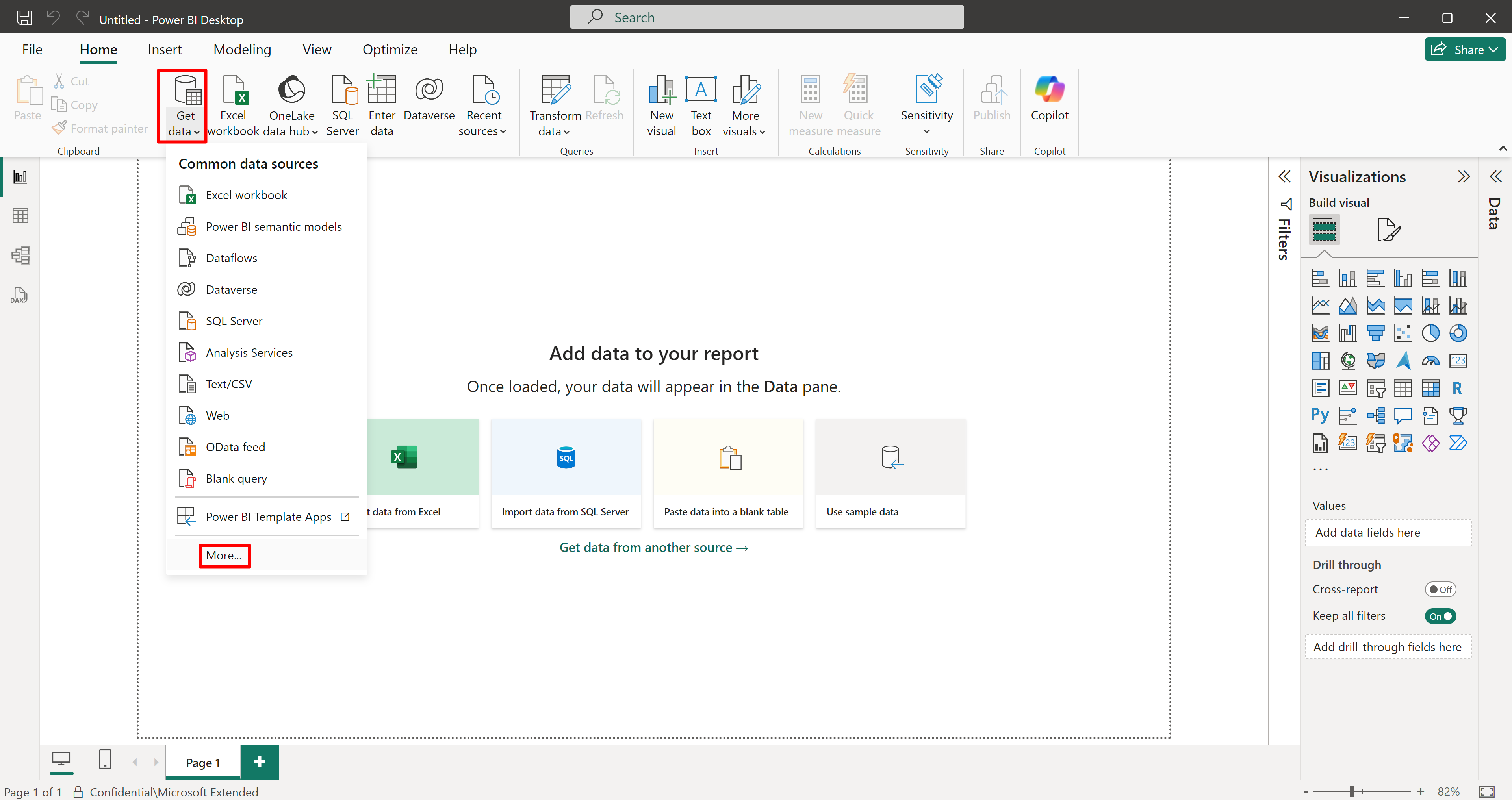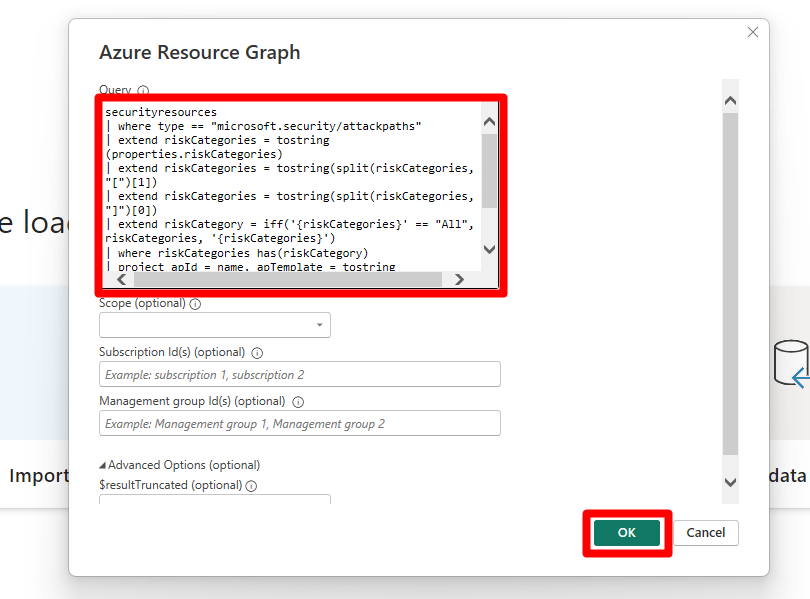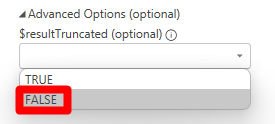你当前正在访问 Microsoft Azure Global Edition 技术文档网站。 如果需要访问由世纪互联运营的 Microsoft Azure 中国技术文档网站,请访问 https://docs.azure.cn。
将 Defender for Cloud 数据添加到 Power BI
通过将 Microsoft Defender for Cloud 的数据与 Microsoft Power BI 连接,你可以轻松监视和分析安全指标。 通过集成,你可以可视化安全见解并快速识别潜在威胁和漏洞。 本文指导你完成将 Defender for Cloud 数据连接到 Power BI 的步骤,帮助你将复杂的安全信息转换为清晰、可操作的见解。
先决条件
将 Power BI 连接到 Azure Resource Graph
必须先将 Power BI 连接到 Azure Resource Graph,然后才能将 Defender for Cloud 的数据连接到 Power BI。
在 Power BI 中查询 Defender for Cloud 数据
将 Power BI Desktop 连接到 Azure Resource Graph 后,你可以使用 Azure Resource Graph 在 Power BI 中查询 Defender for Cloud 的各种数据源。
本页提供的查询是提供结果的示例。 Azure Resource Graph 允许你查询各种数据,你可以创建和自定义这些数据以返回适合您特定要求的结果。
将提供的查询之一复制并粘贴到 Power BI Desktop 内的查询编辑器中。
此查询从 MDC 按风险检索安全建议,让你能够分析评估并确定需要关注的领域。
securityresources | where type =~ "microsoft.security/assessments" | extend assessmentType = iff(type == "microsoft.security/assessments", tostring(properties.metadata.assessmentType), dynamic(null)) | where (type == "microsoft.security/assessments" and (assessmentType in~ ("BuiltIn", "CustomerManaged"))) | extend assessmentTypeSkimmed = iff(type == "microsoft.security/assessments", case( tostring(properties.metadata.assessmentType) == "BuiltIn", "BuiltIn", tostring(properties.metadata.assessmentType) == "BuiltInPolicy", "BuiltIn", tostring(properties.metadata.assessmentType) == "CustomPolicy", "Custom", tostring(properties.metadata.assessmentType) == "CustomerManaged", "Custom", tostring(properties.metadata.assessmentType) == "ManualCustomPolicy", "Custom", tostring(properties.metadata.assessmentType) == "ManualBuiltInPolicy", "BuiltIn", dynamic(null) ), dynamic(null)) | extend assessmentId = tolower(id) | extend assessmentKey = iff(type == "microsoft.security/assessments", name, dynamic(null)) | extend source = iff(type == "microsoft.security/assessments", trim(' ', tolower(tostring(properties.resourceDetails.Source))), dynamic(null)) | extend statusCode = iff(type == "microsoft.security/assessments", tostring(properties.status.code), dynamic(null)) | extend resourceId = iff(type == "microsoft.security/assessments", trim(" ", tolower(tostring(case(source =~ "azure", properties.resourceDetails.Id, (type == "microsoft.security/assessments" and (source =~ "aws" and isnotempty(tostring(properties.resourceDetails.ConnectorId)))), properties.resourceDetails.Id, (type == "microsoft.security/assessments" and (source =~ "gcp" and isnotempty(tostring(properties.resourceDetails.ConnectorId)))), properties.resourceDetails.Id, source =~ "aws", properties.resourceDetails.AzureResourceId, source =~ "gcp", properties.resourceDetails.AzureResourceId, extract("^(?i)(.+)/providers/Microsoft.Security/assessments/.+$",1,id) )))), dynamic(null)) | extend resourceName = iff(type == "microsoft.security/assessments", tostring(coalesce(properties.resourceDetails.ResourceName, properties.additionalData.CloudNativeResourceName, properties.additionalData.ResourceName, properties.additionalData.resourceName, split(resourceId, '/')[-1], extract(@"(.+)/(.+)", 2, resourceId))), dynamic(null)) | extend resourceType = iff(type == "microsoft.security/assessments", tolower(properties.resourceDetails.ResourceType), dynamic(null)) | extend riskLevelText = iff(type == "microsoft.security/assessments", tostring(properties.risk.level), dynamic(null)) | extend riskLevel = iff(type == "microsoft.security/assessments", case(riskLevelText =~ "Critical", 4, riskLevelText =~ "High", 3, riskLevelText =~ "Medium", 2, riskLevelText =~ "Low", 1, 0), dynamic(null)) | extend riskFactors = iff(type == "microsoft.security/assessments", iff(isnull(properties.risk.riskFactors), dynamic([]), properties.risk.riskFactors), dynamic(null)) | extend attackPaths = array_length(iff(type == "microsoft.security/assessments", iff(isnull(properties.risk.attackPathsReferences), dynamic([]), properties.risk.attackPathsReferences), dynamic(null))) | extend displayName = iff(type == "microsoft.security/assessments", tostring(properties.displayName), dynamic(null)) | extend statusCause = iff(type == "microsoft.security/assessments", tostring(properties.status.cause), dynamic(null)) | extend isExempt = iff(type == "microsoft.security/assessments", iff(statusCause == "Exempt", tobool(1), tobool(0)), dynamic(null)) | extend statusChangeDate = tostring(iff(type == "microsoft.security/assessments", todatetime(properties.status.statusChangeDate), dynamic(null))) | project assessmentId, statusChangeDate, isExempt, riskLevel, riskFactors, attackPaths, statusCode, displayName, resourceId, assessmentKey, resourceType, resourceName, assessmentTypeSkimmed | join kind=leftouter ( securityresources | where type == 'microsoft.security/assessments/governanceassignments' | extend assignedResourceId = tolower(iff(type == "microsoft.security/assessments/governanceassignments", tostring(properties.assignedResourceId), dynamic(null))) | extend dueDate = iff(type == "microsoft.security/assessments/governanceassignments", todatetime(properties.remediationDueDate), dynamic(null)) | extend owner = iff(type == "microsoft.security/assessments/governanceassignments", iff(isempty(tostring(properties.owner)), "unspecified", tostring(properties.owner)), dynamic(null)) | extend governanceStatus = iff(type == "microsoft.security/assessments/governanceassignments", case( isnull(todatetime(properties.remediationDueDate)), "NoDueDate", todatetime(properties.remediationDueDate) >= bin(now(), 1d), "OnTime", "Overdue" ), dynamic(null)) | project assignedResourceId, dueDate, owner, governanceStatus ) on $left.assessmentId == $right.assignedResourceId | extend completionStatusNumber = case(governanceStatus == "Overdue", 5, governanceStatus == "OnTime", 4, statusCode == "Unhealthy", 3, isExempt, 7, 1) | extend completionStatus = case(completionStatusNumber == 5, "Overdue", completionStatusNumber == 4, "OnTime", completionStatusNumber == 3, "Unassigned", completionStatusNumber == 7, "Exempted", "Completed") | where completionStatus in~ ("OnTime","Overdue","Unassigned") | project-away assignedResourceId, governanceStatus, isExempt | order by riskLevel desc, attackPaths desc, displayName选择“确定”。
选择“加载”。
借助 Azure Resource Graph,你可以灵活地检索和分析 Defender for Cloud 环境中提供的任何数据,确保获得全面的定制见解。 将数据添加到 Power BI 后,你可以创建可视化效果和仪表板,以有效地监视和管理安全状况。


